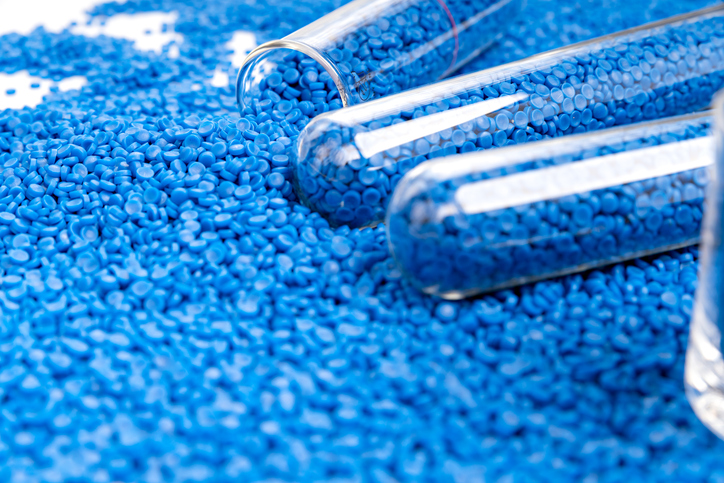Plastic has come a long way from its original use as a cheap and colorful substitute for tortoiseshell. Since its invention, plastic materials have been developed that can withstand the pressures of deep-sea oil mining operations, hold up to the intense performance requirements of automobiles, and stay strong even in the hostile conditions of the aerospace and aeronautics industries. Because of this, it makes sense that in the years following its inception in 1862, plastic processing methods have also evolved by leaps and bounds.
But what are these processes, exactly, and how do they differ from one another? Injection molding is considered to be the gold standard when it comes to precision and accuracy even in high-volume production — but how does it compare to other popular (and useful in the right application) methods? Let’s find out.
What are the Different Plastic Processing Methods?
Over the years, innovation and necessity have led to the development of a number of plastic processing methods. A few of the most widely used include:
- Injection Molding — A process that involves injecting molten plastic material into a mold under high pressure. Once cooled, the mold is removed and the solidified part is ejected. Injection molding is often used when precision, high-volume, and complex geometries are needed.
- Blow molding — A process used to create hollow plastic parts by inflating a heated plastic tube (parison) inside a mold. The parison expands to conform to the mold’s shape, then cools and solidifies. Blow molding is a common choice for bottles, containers, and other lightweight hollow items.
- Thermoforming — This process involves heating a plastic sheet until it becomes pliable, then forming it over a mold using a vacuum, pressure, or a combination of both. Thermoforming is well-suited for making large, shallow parts with simple shapes.
- Extrusion — A process that involves melting plastic and forcing it through a die to create continuous shapes, such as pipes, profiles, and sheets. Ideal for producing long, continuous parts with consistent cross-sections.
- 3D Printing — Also known as additive manufacturing, parts are built layer by layer from a digital model by a computer that deposits materials according to design specifications. It’s a highly versatile process that is great for creating complex parts with minimal waste.
Compare and Contrast: Injection Molding vs Other Plastic Processing Methods
Production Speed
Of the plastic processing methods mentioned above, injection molding is by far one of the fastest, particularly for high-volume runs. Once the mold is set up, each cycle is quick and produces parts rapidly. It’s an ideal solution for producing large quantities of parts with maximum efficiency.
In contrast, blow molding is also relatively fast, but the setup can take longer, which adds to the overall production time. Thermoforming and extrusion are both slower, with 3D printing having the slowest production speed among these methods.
Winner: Injection Molding
Runner-Up: Blow molding, but its advantages are limited to hollow parts
Versatility
In versatility, injection molding also stands out for its ability to produce complex and detailed parts with tight tolerances. It is a method that supports a wide range of materials and can handle parts with complex geometries, varying wall thicknesses, and high quality surface finishes. This makes injection molding one of the most suitable plastic processing methods for a broad spectrum of applications, from automotive to consumer goods.
Amongst the other methods, 3D printing is a close second in versatility. It is ideal for producing complex and custom parts directly from digital models, but is less ideal for high-volume manufacturing. Blow molding, extrusion, and thermoforming are all much more limited in this area.
Winner: Injection Molding
Runner-Up: 3D Printing
Cost
When it comes to cost, injection molding takes a bit of a hit. Economies of scale make it an ideal solution for high–volume production, as the price per part is reduced as more parts are manufactured. However, injection molding does require a higher initial setup cost.
When you look at cost in a vacuum, blow molding and extrusion stand out as some of the cheapest plastic processing methods. Both can be done at a relatively low cost per part and both have moderate to low initial setup costs. 3D printing, in contrast, is one of the most expensive methods per unit, especially for high-volume runs.
Winner: Blow molding (but keep in mind that blow molding is limited to the creation of hollow parts)
Runner Up: Extrusion (again, keep in mind that it is limited to continuous shapes)
Advantages
When it comes to the list of advantages, no plastic processing method beats out injection molding. Injection molding is well-known for having extremely high levels of precision, being compatible with a wide variety of materials, offering superior surface finishes, and exhibiting consistency and efficiency for low- to high-volume runs.
In contrast: blow molding is cost-effective for hollow parts and ideal for high-speed production; 3D printing excels in design flexibility, rapid prototyping, and customization; thermoforming is flexible and cost-efficient for simple shapes; and extrusion is ideal for the production of uniform shapes with minimal waste. But each comes with distinct limitations that must be weighed against these advantages.
Winner: Injection Molding
Runner Up: Blow Molding
Looking for Precision Injection Molding Services? Turn to Octex
If you need plastic components for technically complex high-end applications, injection molding stands out as the premier solution. At Octex, that’s exactly what we specialize in. We are a provider of turnkey injection molding solutions for complex high-end industries. Whether you need micro-molding, medical molding, or highly precise injection molding, we have the capabilities to deliver. Our facilities are equipped with the latest in manufacturing technology, and what we don’t have, we’re willing to invest in.
Are you looking for injection molding solutions to meet the exacting standards of your applications? Get in touch with us today to get started with a free quote.

